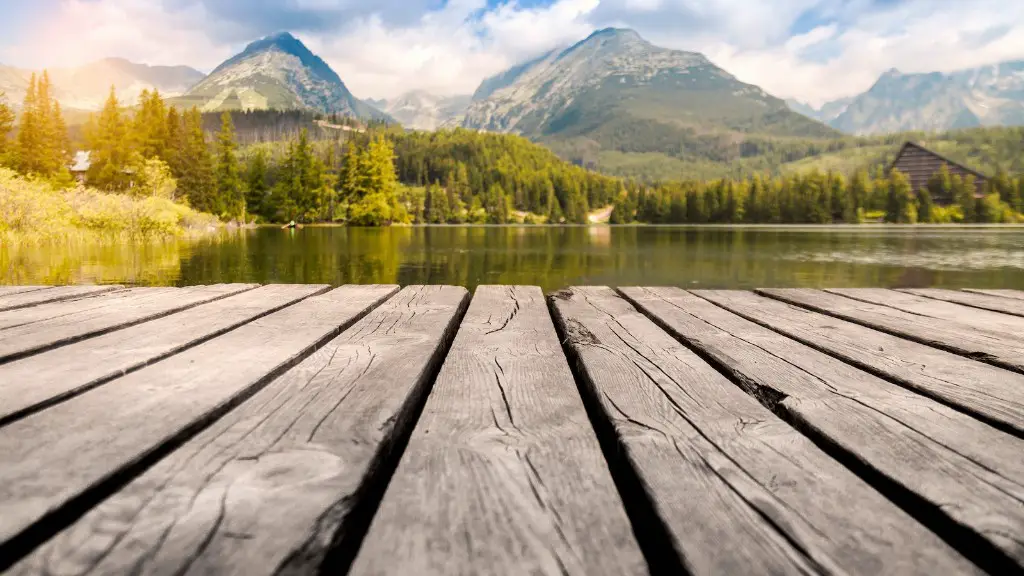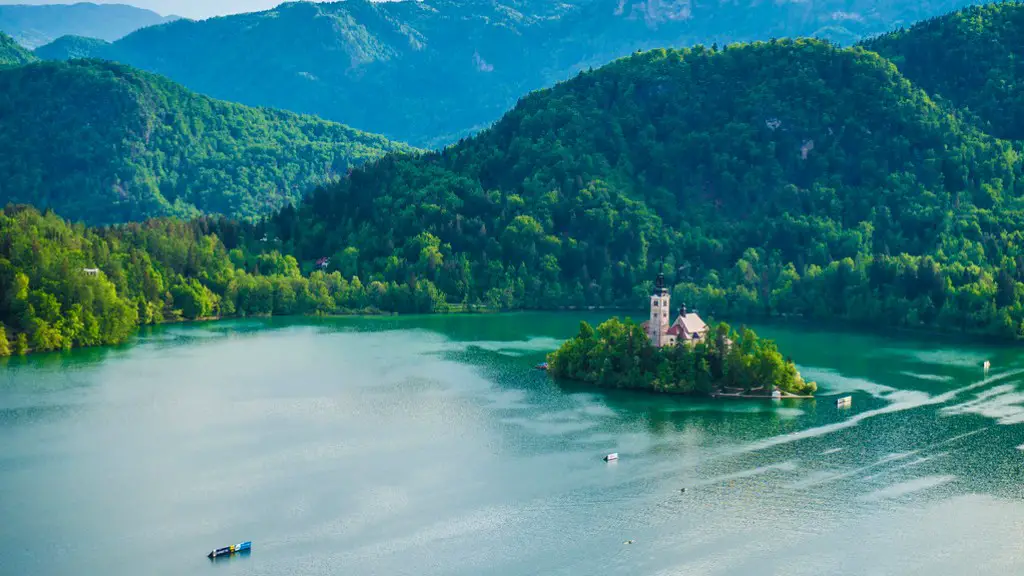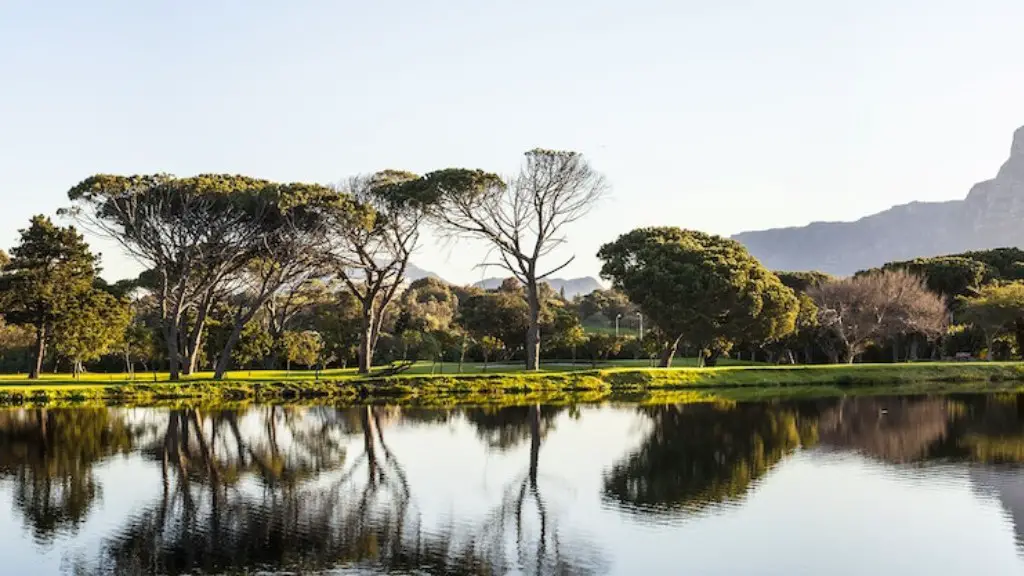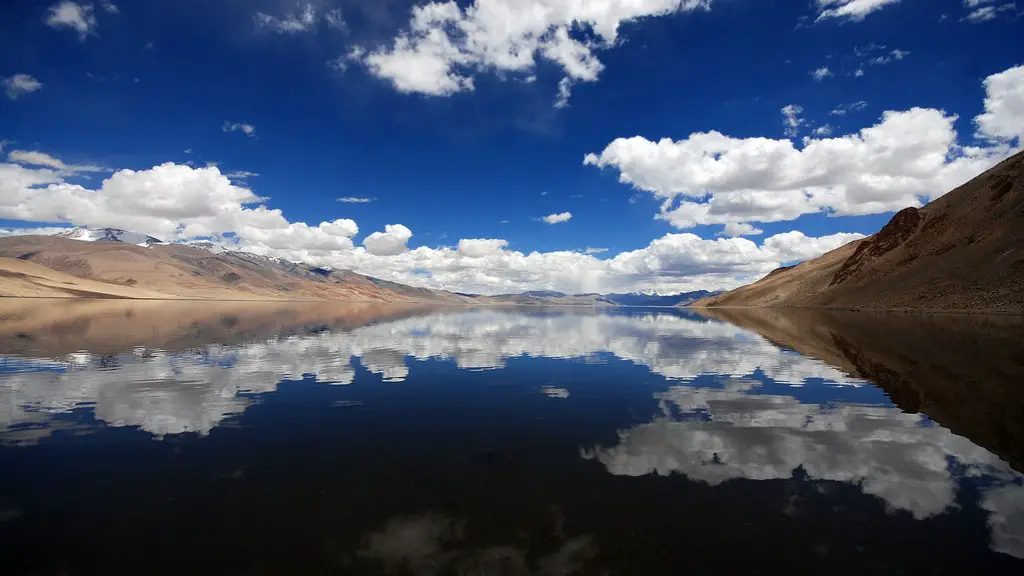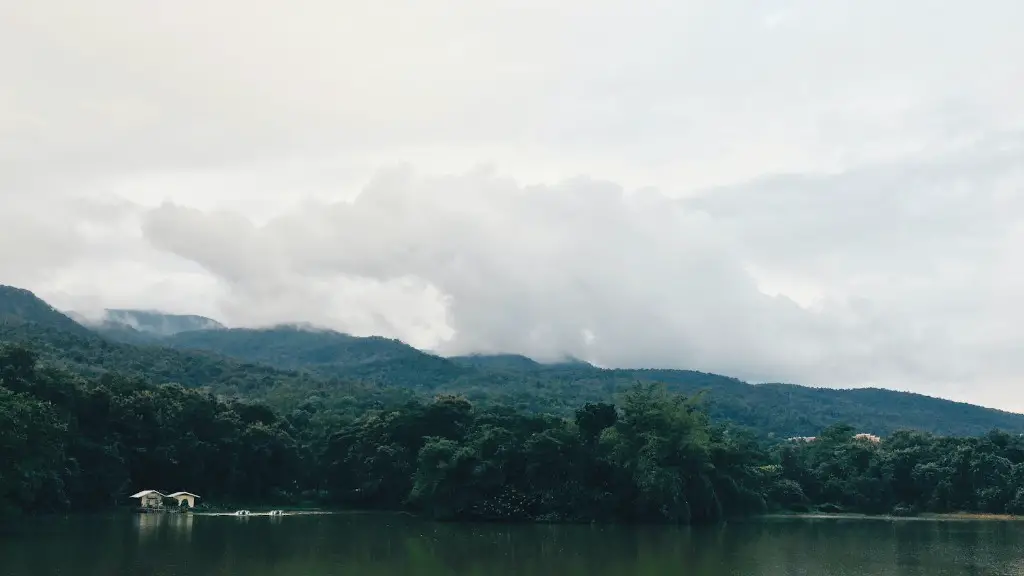Lake Titicaca: An Ecological Treasure
One of the world’s most unique natural treasures, Lake Titicaca is the largest lake in South America and the highest navigable lake in the world located between Peru and Bolivia. Surrounded by lush green hills, the lake has served as an important cultural, spiritual and economic hub for centuries and is one of the most remarkable ecosystems on the planet.
In recent years, visitors have flocked to the area to experience the stunning landscapes and take part in the many activities the lake has to offer. People boat around the lake, exploring its rocky shorelines, visiting the local villages, taking in the fresh mountain air, and marveling at the region’s biodiversity.
The waters of Lake Titicaca are home to over 200 species of fish and other aquatic life, including the endangered giant frog of th Titicaca. Some of these species are endemic to the lake and many are facing increasing environmental threats due to overfishing, pollution and the resulting habitat degradation, making the protection of the lake’s unique biodiversity even more important.
The people who live on the banks of the lake have long depended on its resources to support their livelihoods, mainly through fishing and agriculture, but the area has also become a popular destination for both local and international tourists. This brings with it the potential for economic benefits, but also the risks of unsustainable practices, such as overfishing and the pollution and disruption of the lake’s delicate balance.
The Peruvian and Bolivian governments are working with local communities to protect the lake and its resources, while also promoting sustainable tourism. The Lake Titicaca Research Center, funded by the Peruvian government, is researching the lake’s biological and ecological characteristics, as well as developing strategies to promote sustainable development. Non-profit organisations in the area are also working to protect and conserve the lake by raising awareness and proposing sustainable practices.
Those looking to experience the area can do so by kayaking, motorboat or traditional wooden reed boats. There are many tour companies offering day-trips and longer guided tours, some even offering homestay experiences, allowing visitors to experience the local culture and cuisine.
Lake Titicaca is one of the most special places on earth and it is important to respect its unique environment. Boating around the lake is an incredible experience that should be enjoyed in a responsible and sustainable way.
The Peruvian Peoples’ Traditional Abode
Lake Titicaca has long been a spiritual and cultural hub for the local people, with the Aymara, Quechua and Uros ethnic communities living in harmony with the lake and its resources for many generations. The Aymara, who are the original inhabitants of the lake, have a strong connection to the lake and its cultural heritage, something that is still evident today in their traditional costumes, rituals and celebrations.
The Uros are an indigenous people who live in floating islands made of reeds that they build and reconstruct every year. The “homes” they construct are intricate structures, made with reeds harvested from the lake. For centuries, the Uros have lived off the lake, fishing and relying on the natural resources it provides. They also offer boat trips and traditional services to tourists who come to visit.
The surrounding areas of Lake Titicaca provide a unique and fascinating experience for those looking to get out into nature and explore the local wildlife. From local wildlife refuges to the Inca Trail, there are a plethora of activities to experience, from trekking and birdwatching to exploring Incan ruins.
Of course, no trip to Lake Titicaca would be complete without visitors taking to its waters. For experienced boaters, kayaking and motorboating around the lake is a popular activity, but for those with less boating experience and looking to explore the many islands and bays around the lake, renting a traditional Uros reed boat is the way to go.
Exploring the area in the traditional reed boats allows visitors to experience the culture and hospitality of the local peoples, while also getting the chance to observe and appreciate the lake’s rich biodiversity. Boating safely on Lake Titicaca is a rewarding experience, and one that will send visitors back with incredible memories.
Safeguarding The Ecological Treasure
Though the area is becoming increasingly popular with tourists and the local governments are doing their part to promote sustainable tourism and development, there are still many environmental challenges facing the lake, such as the presence of invasive species, and water pollution from agricultural and industrial runoff.
It is essential that local, regional and global players come together to protect and conserve this precious ecosystem, while also ensuring its economic benefits are shared with the local communities. The government of Peru has already taken steps in this direction with the development of the Lake Titicaca Research Center and the promotion of sustainable tourism policies.
Creating a collaborative approach between the local people, governments, and international and non-governmental organisations is essential to preserve this unique environment for future generations. This includes the adoption of responsible practices such as responsible fishing, plastic-free activities, and the creation of buffer zones. Local, eco-friendly initiatives, such as the promotion of green and solar-powered boats are also helping to reduce the ecological impact in the area.
In order to do this effectively, communication between the stakeholders is key. Governments and international organisations must work together to support and implement strategies to protect and conserve the lake, while also providing better education and awareness to local people. This would ensure that the region’s tourism industry remains sustainable while respecting the environment and its natural inhabitants.
Freshwater Conservation Efforts
In addition to the conservation efforts around Lake Titicaca, organizations around the world are engaged in ongoing efforts to protect freshwater resources. These efforts include the United Nation’s Global Goals initiative and the World Bank’s Global Water Security and Sanitation initiative.
The Global Goals initiative, adopted by 193 countries, aims to ensure access to clean water and sanitation for all check over the next 15 years. These goals address water-related issues such as water scarcity, pollution, water-related natural disasters and access to clean water for all. The Global Goals are also working to promote sustainable use of water and to protect aquatic life.
The World Bank is also heavily involved in freshwater conservation initiatives. Through its partnership with the Private Sector Water Platform, the World Bank is investing in projects that promote access to safe, clean water for everyone. The Bank is also launching several initiatives to help protect and conserve freshwater resources across the globe.
Organizations such as the World Wildlife Fund (WWF) are also actively campaigning in support of freshwater conservation causes. WWF is focusing primarily on sustainable freshwater management, waterway conservation and clean water services. Through these efforts, WWF hopes to restore freshwater habitats and promote sustainable use of these vital resources.
Local Eco-Initiatives Making The Difference
As well as these international efforts, local eco-initiatives are also making a difference in protecting Lake Titicaca and its freshwater resources. The Lake Titicaca research center is researching ways to reduce dependence on electricity generators and to promote the use of solar power and green boats. They also provide community programs on sustainable agriculture, fishing and tourism.
Non-governmental organizations such as the aptly named Lake Titicaca Foundation are also working to reduce pollution, restore the lake’s natural habitats and protect its biodiversity. The Foundation promotes responsible tourism and works closely with local communities on conservation efforts and promoting sustainable fishing practices.
The local villages are participating in their own initiatives, such as water-saving projects and garbage collection campaigns, to protect their homes and livelihoods. Local communities are also encouraging eco-tourism, making sure that visitors respect the local culture and protect the fragile ecosystem.
Overall, the conservation of Lake Titicaca is essential in preserving the local environment and habitats, while also providing economic and cultural benefits. International, regional and local efforts must come together to ensure that this precious natural treasure remains healthy and vibrant in years to come.
The Impact of Climate Change
In recent years, climate change has become a major threat to Lake Titicaca and its freshwater resources. As temperatures increase, the lake’s water levels are decreasing, and with it, the lake’s unique biodiversity is being put at risk.
Large parts of the lake have suffered from decreased water levels, as well as an increase in water pollution from agricultural and industrial runoff. These factors are making it increasingly difficult for local communities to access clean water and are severely damaging the local aquatic ecosystems.
Climate change is also having an effect on the local culture and traditions, as well as the way of life. Local people are increasingly facing water shortages and food insecurity, and many of their traditional activities, such as fishing and agriculture, are becoming more and more difficult.
Climate change is a global issue, and therefore must be tackled on a global level. International initiatives such as the Paris Climate Agreement and the Global Greenhouse Gas Initiative are taking steps to reduce emissions, but more needs to be done to ensure that these efforts have a tangible effect on the ground. Additionally, local and regional initiatives must come together to reduce emissions and protect Lake Titicaca and its natural resources.
Conclusion
Lake Titicaca is a unique and remarkable natural treasure, both for its rich biodiversity and its cultural importance. It is essential that we protect this precious environment, while also ensuring that local communities benefit from the economic and cultural opportunities offered by the lake.
International, regional and local initiatives must come together and promote sustainable practices, while also working to reduce the effects of climate change in the area. Boating around the lake is an incredible experience, but it must be done in a responsible and sustainable way.
